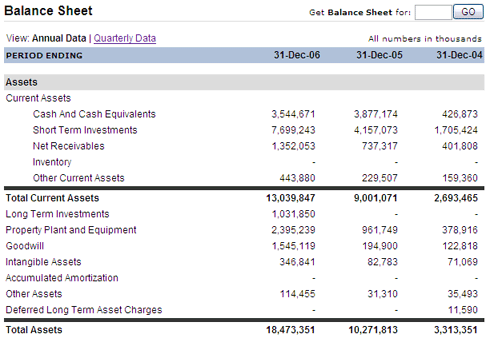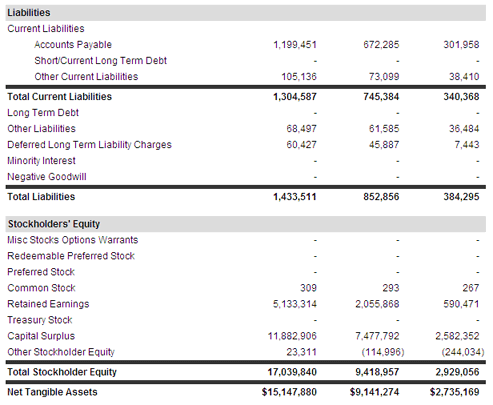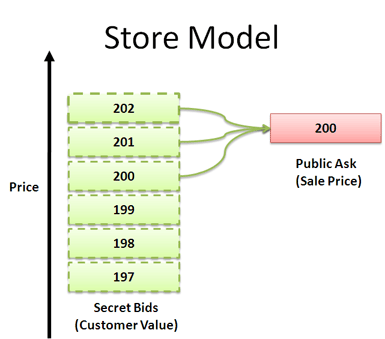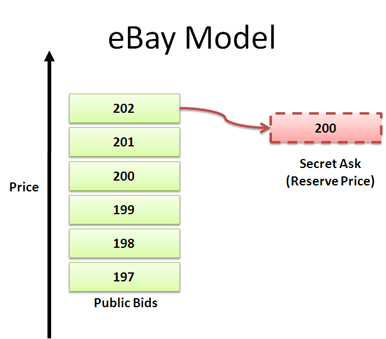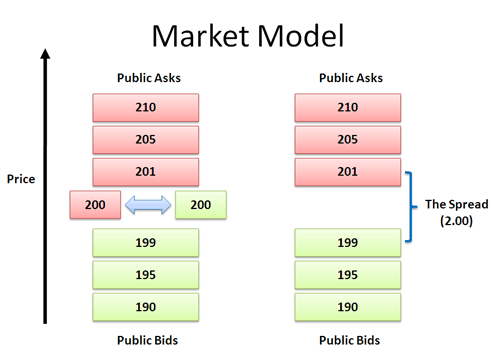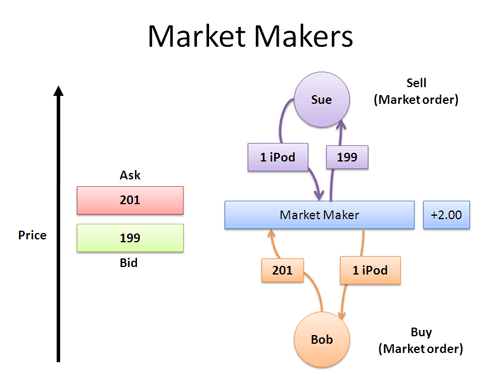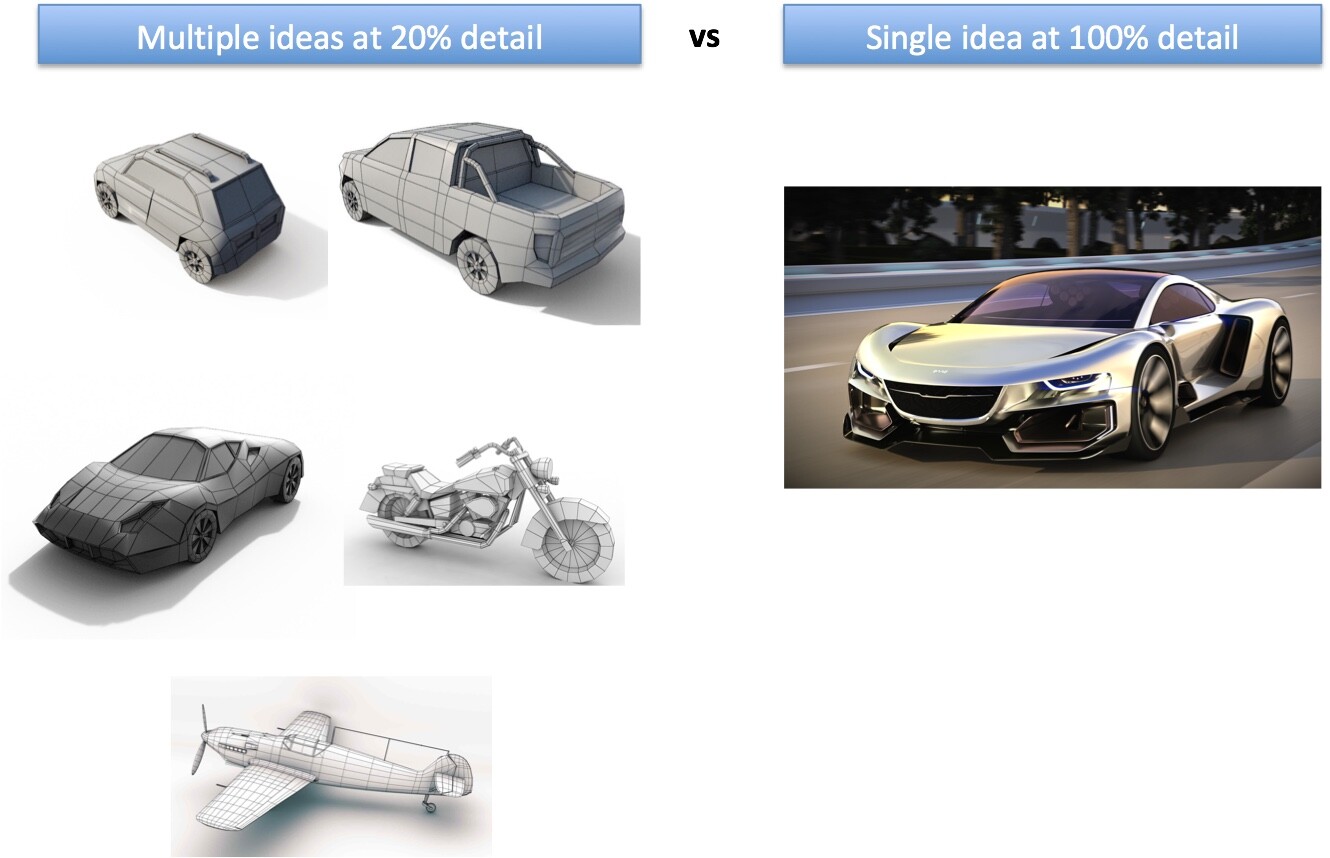I don’t understand all the dominoes in the financial crisis. In situations like this, it’s helpful to step away and look at general principles: never mind the pieces, what’s the “gravity” that makes them fall? And fall so hard?
Leverage. Leverage is debt used for investment purposes, and is extremely important. Why?
- Debt, when invested, multiplies return (profits and losses)
Leverage is a multiplier, a super-power. Super-strength is great when times are good, and horrific when you accidentally “bite your tongue” (it’s super-strength, not invulnerability). Concepts like leverage are casually mentioned, but let’s see why the dominoes fall.
Get Rich Quick
I’ve got a great investment plan for you. Ready?
- Step 1: Withdraw all your money
- Step 2: Go to Las Vegas
- Step 3: Bet it all on red in roulette (Get it right and double your money — get it wrong and lose it all)
It’s perfect! We’ll double our money in one step.
Sure, there’s a “chance” that things go wrong. But even then it’s no so bad — we’ll be at zero, like the day we were born. Presumably naked and crying as well.
Double My Money? But I Want More!
The plan sounds interesting, but there’s a problem — what if I only have \$100? Doubling to \$200 is nice, but not life-changing.
A few wild thoughts later, and we’re onto a better idea: let’s borrow money! The plan becomes exciting:
- Take our \$100 and borrow \$1,000,000 from friends, families, banks, and unsavory characters. (How? Well, show different people our \$100 and ask to borrow another \$100, with our original cash as collateral).
- Go to Vegas
- Bet the \$1M dollars on black! I mean, red!
What happens now?
If we win: we get \$2M, pay back our \$1M loan, and are sitting pretty with our profit of \$1M.
And if we lose? Uh oh. Now we’re worse than naked: we’ve lost our shirts and everyone else’s too! Because we took debt, our worst case scenario is no longer going broke — it’s going negative.
Notice how the loan changed the outcomes — neither wild riches nor debtor’s prison were possible without the loan.
The Risk Multiplier
What just happened? Debt multiplies our risk and reward. The good times get great, and the bad times become awful. In our example, we went from winning or losing \$100 to winning or losing \$1M — a 10,000x difference in profit and loss!
This effect from investing debt is called “leverage”. Why?
I suppose it’s because a lever lets you move one end a tiny bit (one inch) and have the other side move a large amount (1 foot). It’s also called a leverage or gearing ratio — move the big gear one cycle and move the small gear many cycles.
My inner geek cringes, since the sides of a lever move in opposite directions (one side up, one side down) and same with the gears (one side clockwise, the other counter-clockwise). Remember that with financial leverage, both sides move the same way.
I imagine leverage as a game of follow-the-leader: I push my money in one direction (making a bet), and the huge pile of money I borrowed does the same.
Use whatever analogy works for you — the key is if your money wiggles up or down, the borrowed money does the same.

The Risk and Benefit of Leverage
Why does leverage work? At its heart, you are borrowing someone’s assets and reaping the benefits. It’s like borrowing a cow and selling the milk! What a great idea!
It’s great until the cow runs off. Now you’re stuck — you owe a cow and don’t have one to return. The risk of leverage is investing that debt and losing what you borrowed, which can wipe out any profits.
Let’s try a more realistic example then roulette: investing in a house. Suppose you have 10k and borrow 90k, to purchase a \$100k house. You have a leverage ratio of 10:1 — for every 10 dollars of the asset, you’ve put in 1 dollar of equity (your own money).
If house prices rise by 10%, how much did you make? At first blush we’d say 10%, which is true — but you made 10% on the entire 100k! The house is now worth 110k, and after paying your 90k debt you’re left with 20k. That 10% growth became 100% profit on your initial investment!
- leverage ratio = asset / equity
- return = leverage ratio * percent change
Again, with 10x leverage, 10% growth becomes 100% return on our initial equity. From our analogy, we were in “control” of 10 dollars for every 1 we put in. So, we gained 10x the profit.
Now what about the reverse — when the house falls 10% to 90k?
Well, we can sell the house for 90k, pay off our loan (90k) and are left with… zero! Similarly, a 10% dip in prices becomes a 100% loss of equity — we’re wiped out! We get 10x the loss when prices go south.
And if the house price falls 20% (impossible! improbable! unlikely!), we suffer a 200% loss — we’ve lost our initial 10k and owe 10k beyond that (sell the house for 80k, but the loan is still 90k).
Hopefully the magnifying effect of borrowed money is becoming clear. You lose your equity when the investment drops 1/leverage ratio — in this case, 1/10 or 10%. With a 25x leverage ratio, the investment only needs to drop 4% in order to be wiped out. One way to think about it: you’re paying for losses out of your own pocket, not the borrowed money (you always have to pay it back). Your pocket is only 1 dollar of the 10, so once you lose it (1 dollar out of 10, or 10%) you are wiped out. Any more, and you’re in debt.
Real-world Examples
Leverage appears all over finance, but sometimes in disguise. Let’s take a look:
Getting a mortgage: As we saw, borrowing money to buy a house is a form of leverage. With 5% down (a 20x gearing ratio), your house only needs to drop by 5% to lose money. With 0% down, your house has to drop… wait for it… any amount for you to lose! And after your house is worth less than your mortgage, there’s little incentive to pay it off (better to go bankrupt, depending on the debt).
Lending money for a mortgage: Even banks are levered. When they offer money, where do you think they get it? From deposits! They borrow your deposits to loan it out to other people. If they have 10k of deposits they might loan out 100k (there’s some magic that happens here, how banks loan more money than they have; that’s for another time). If they loaned money for a house, and the house drops 10% in value and the debtor doesn’t pay, the bank has lost all if its deposits.
Offering mortgage insurance: Insurance companies might have 10k worth of cash, and offer 100k worth of insurance coverage to banks (C’mon, did you really think the insurance company had enough to pay off everyone’s claims?). Of course they don’t expect everyone to file a claim, but if even 10% of people do, they are wiped out. There isn’t an explicit loan, but the insurance company has created an obligation to pay (called the insurance leverage ratio).
See the set up? When prices are rising:
- Owners are making a lot of money (they leveraged the house)
- Banks are making a lot of money (they leveraged their loans, and earn a lot of interest on the borrowed money)
- Insurance companies are making a lot of money (they’re offer more coverage, which means more premiums)
If the music stops and house prices fall, problems arise:
- Borrowers lose equity — a 5% drop when 20x levered means the borrower is wiped out. Any more and the loan is worth more than the house.
- Banks lose loans — if 5% of loans go bad, the banks have to pay for the lost value themselves.
- Insurance companies lose money — if 5% of claims are called in, when the insurance company is 20x levered, it means the company has lost all of its assets!
For 20x leverage, a 5% drop would wipe you out to zero equity. Any more and you’re going negative — you’re at zero equity and still owe money!
The Lessons
I don’t understand the crisis, but I’m getting a grasp on leverage: it’s the gravity that pulls down the dominoes. In fact, it can multiply the dominoes as they fall! Here are the key points:
- Leverage multiplies profits and losses: You can make a “regular” investment swing as wildly as you like by borrowing money.
- Return = leverage ratio * percent change: A meager 10x gearing ratio can double your money with a 10% gain, or wipe you out with a 10% loss. By the end of a crisis, some banks increased their leverage ratio to 30:1 — if prices fell even 3% they would be wiped out!
- Leverage appears everywhere: Companies have debt/equity ratios (how levered they are) and stock portfolios have beta (riskiness beyond the market average, which is increased by debt). Whenever you see debt or investment, look to see if it’s leveraged in some way.
Leverage make the boom times better and the busts harsher. The financial crisis has many other effects in play (such as the liquidity crisis, which makes it difficult to sell the assets you have to pay off your debts), but let’s take one idea at a time. A good friend found somepodcasts on the crisis — if you’ve found a resource that helps you get the crisis, feel free to share it below.
